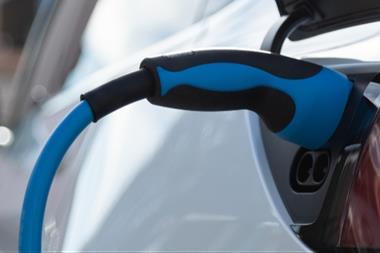Sainsbury’s has confirmed that it will cap its fuel gross profit margin to no more than 3.5 pence per litre for five years, while Asda will guarantee its existing fuel pricing strategy, in a strong rebuttal to the findings of the Competiton and Markets Authority (CMA).
Last month the CMA warned fuel prices could rise at a large number of Sainsbury’s and Asda petrol stations if the proposed merger of the two companies went ahead. In its provisional findings on the deal, its investigation of the proposed merger found extensive competition concerns.
However Sainsbury’s and Asda have responded saying they strongly disagree with the CMA’s Provisional Findings and have found the CMA’s analysis of their proposed merger to contain significant errors.
Their statement read: “This is compounded by the CMA’s choice of a threshold for identifying competition problems that does not fit the facts and evidence in the case and that is set at an unprecedentedly low level, therefore generating an unreasonably high number of areas of concern.”
They sought to address thes CMA’s economic and legal errors n their detailed response to the Provisional Findings.
They also responded to the Notice of Proposed Remedies by outlining supermarket and petrol forecourt divestments across both brands that would satisfy reasonable concerns regarding any substantial lessening of competition as a result of the merger, by applying a conservative yet reasonable threshold.
The two supermarkets stressed the following post-merger commitments:
• To deliver £1 billion of lower prices annually by the third year post-completion. To invest £300 million in the first year of the combination and a further £700 million over the following two years as the cost savings flow through. This would reduce prices by around 10% on everyday items;
• Sainsbury’s will cap its fuel gross profit margin to no more than 3.5 pence per litre for five years; Asda will guarantee its existing fuel pricing strategy;
• The price commitments will be independently reviewed by a third party and the Parties will publish the performance each year, holding them to public account;
• Sainsburys will move to pay small suppliers (turnover with the business of <£250k) within 14 days; Asda will continue to pay its small suppliers within 14 days, in line with existing commitments.
The two companies provided the CMA with details of their estimated £1.6 billion cost savings which allows them to fund the £1 billion customer price commitment while also delivering on the commitments to shareholders of £500m of net synergies, low double-digit ROIC (return on invested capital) and double digit EPS accretion by the end of the second full financial year.
They will create cost savings in three ways: By securing lower purchasing prices from suppliers, predominantly by paying the lower of the two prices that Sainsbury’s and Asda currently pay large suppliers for identical products; by putting Argos stores into Asda; by jointly buying shared goods and services and reducing central costs.
Sainsbury’s chief executive, Mike Coupe and Asda chief executive, Roger Burnley said:
“We are trying to bring our businesses together so that we can help millions of customers make significant savings on their shopping and their fuel costs, two of their biggest regular outgoings.
“We are committing to reducing prices by £1 billion per year by the third year which would reduce prices by around 10% on everyday items. We are happy to be held to account for delivering on this commitment and to have our performance independently reviewed and to publish this annually.
“We hope that the CMA will properly take account of the evidence we have presented and correct its errors. We have proposed a reasonable yet conservative remedy package and hope the CMA considers this so that we can deliver the cost savings for customers.”
They will create cost savings in three ways:
- By securing lower purchasing prices from suppliers, predominantly by paying the lower of the two prices that Sainsbury’s and Asda currently pay large suppliers for identical products
- By putting Argos stores into Asda
- By jointly buying shared goods and services and reducing central costs






























No comments yet